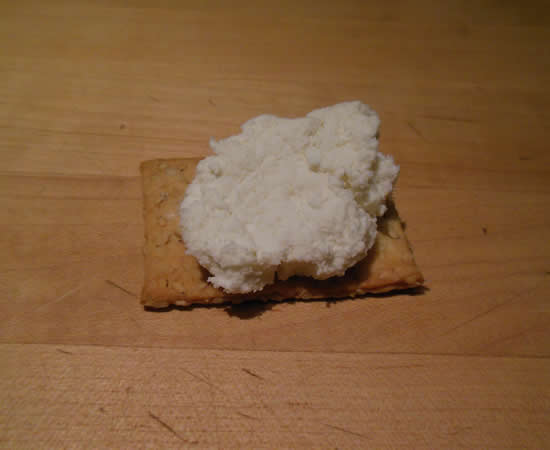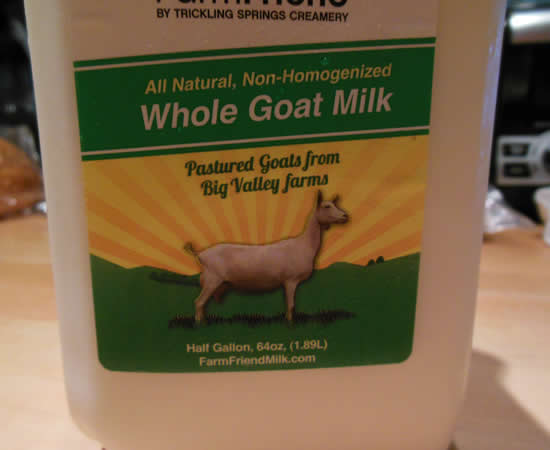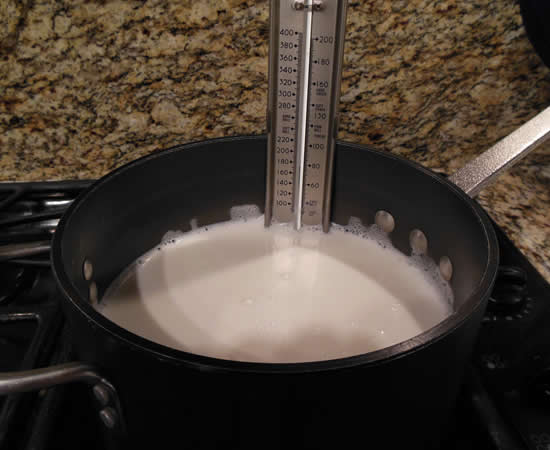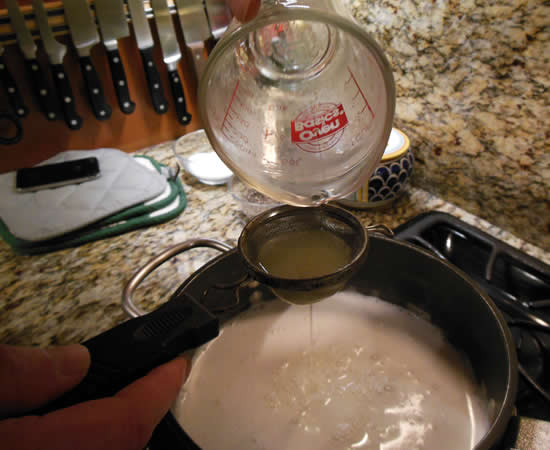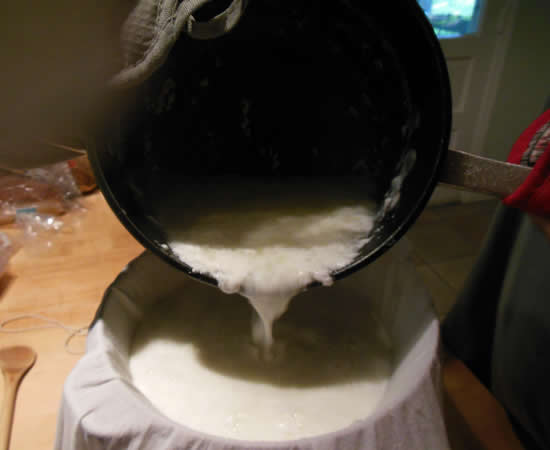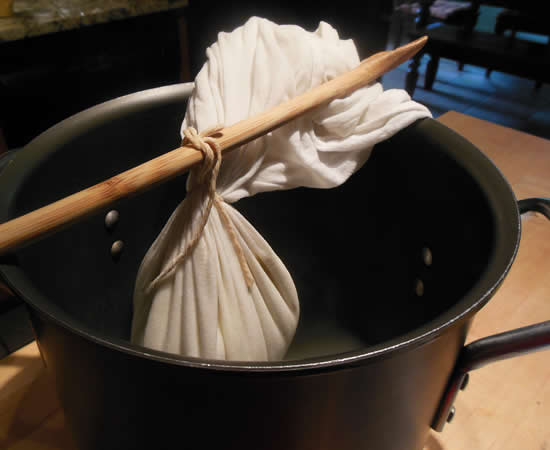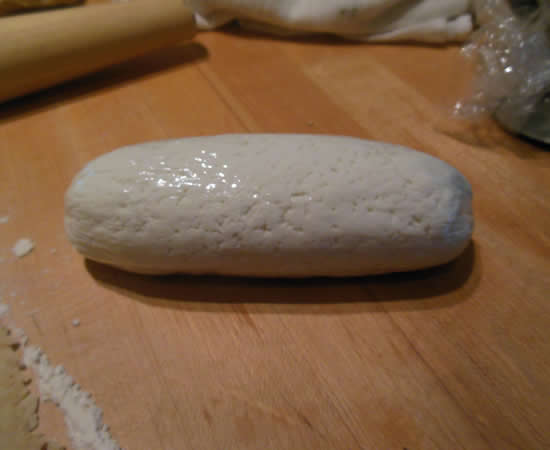Who woulda thunk that some goat milk and some lemon juice could create something so outrageously good?
I’m impressed. Really impressed.
Victor started with the cheese-making a while back with homemade ricotta. We’ve had it a few times – mostly as a dessert. It’s really awesome, rich, and fun to use. Today, he decided it was time to try chevre.
There are several ways to make a homemade chevre, with lemon juice, vinegar, buttermilk, and any number of commercial starters with a score of unpronounceable ingredients. Today, we opted for the basic lemon juice.
The concept is pretty simple.
Start with a half-gallon of goat milk. NOT ultra-pasteurized – which you shouldn’t buy, anyway.
Slowly heat milk until it reaches 180°
Add lemon juice and stir. Let sit for 10 minutes.
Pour into a cheesecloth-lined colander. Victor used a flour sack towel.
Hang the bundle over the pot to drain with a wooden spoon.
Shape it into a log and chill.
Homemade Chevre
adapted from About.com
- 1/2 gal quart goat’s milk
- 2/3 cup fresh lemon juice
- salt to taste
Slowly heat the milk on the stove until it reaches 180°. Gentle bubbles should be forming and the surface will look foamy. Turn off the heat.
Stir in the lemon juice then let the milk sit for 10 minutes. The milk should curdle and become slightly thicker on the surface.
Line a colander with two layers of cheese cloth. Gently pour the milk into the cheese cloth then gather the cheesecloth up around the curds and tie it into a bundle.
Hang the bundle over a pot so the liquid can drip out. (You can do this by attaching the bundle to a wooden spoon or a ladle and setting the spoon over the top of the pot.)
Let the cheese drain for at least 1 1/2 hours. Scrape the cheese into a bowl. Stir in salt and/or other ingredients to taste.
Use your hands to pat and shape the cheese into a small wheel or log.
The flavor and texture of the cheese usually improves a little bit if you refrigerate it for a few hours before serving. The goat cheese should stay fresh in the refrigerator for 1 week.
This really, really is awesome! It’s not difficult and can be made with items many folks already have at home.
And if you have kids? A great project to get them to see how real food is made and a way to get them to eat something different.
We’ll be making more. And more. And more.

